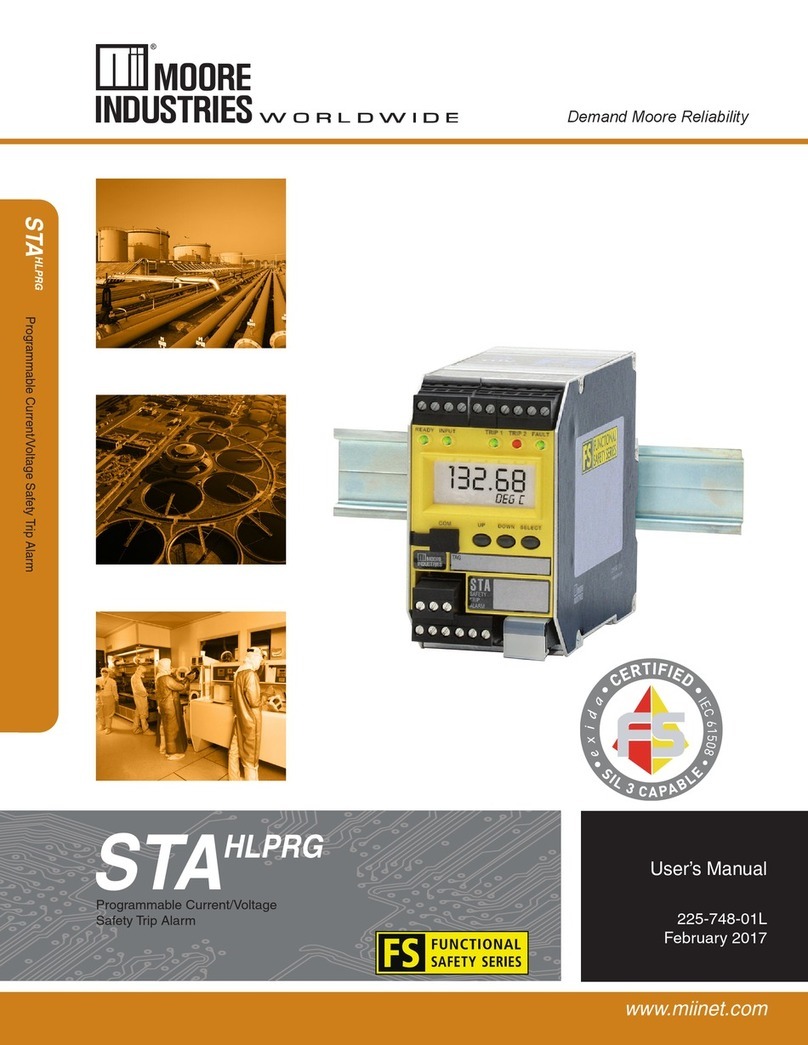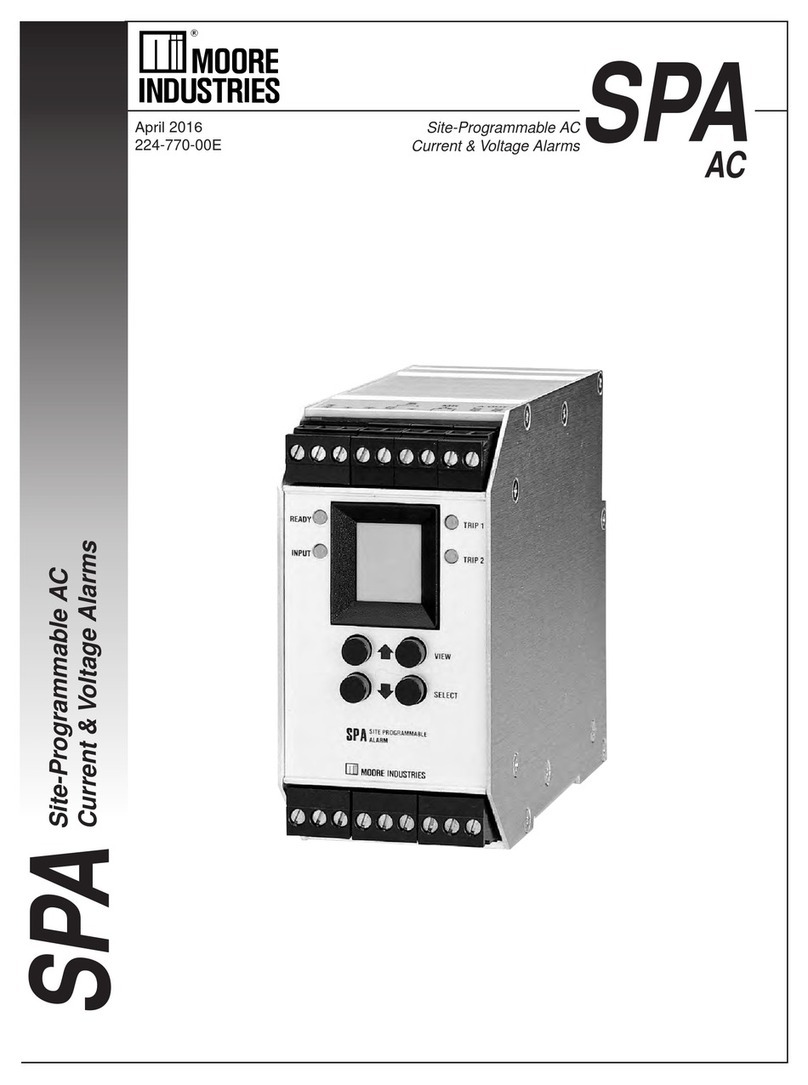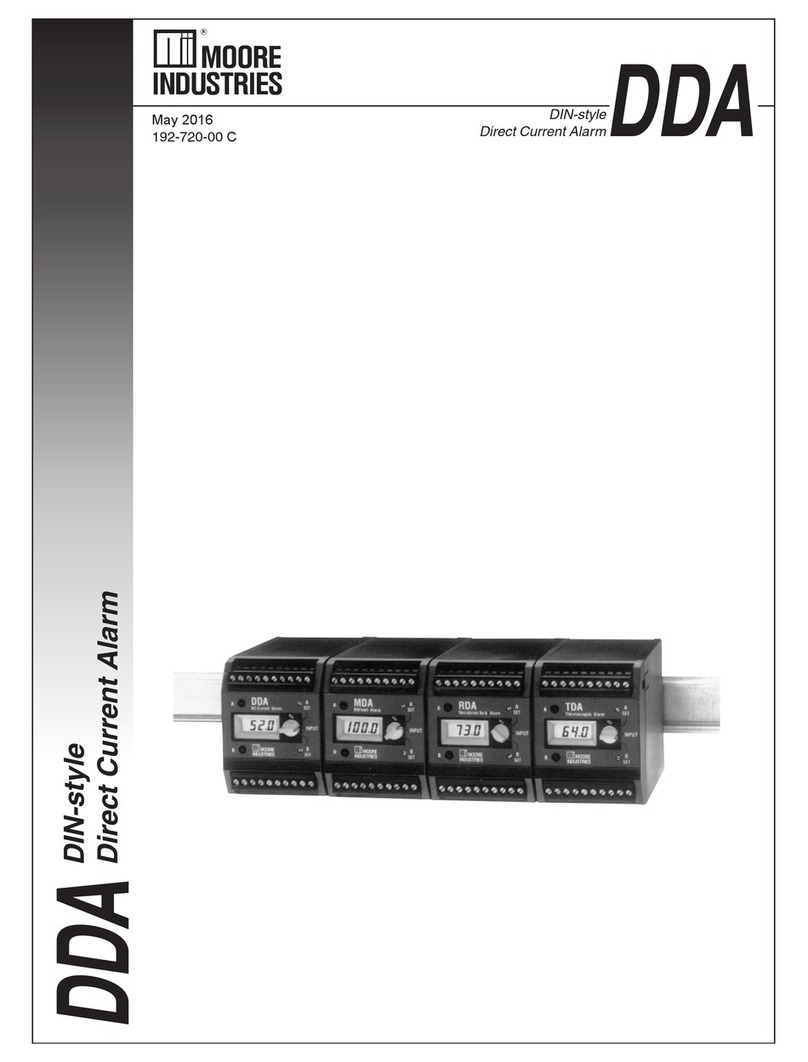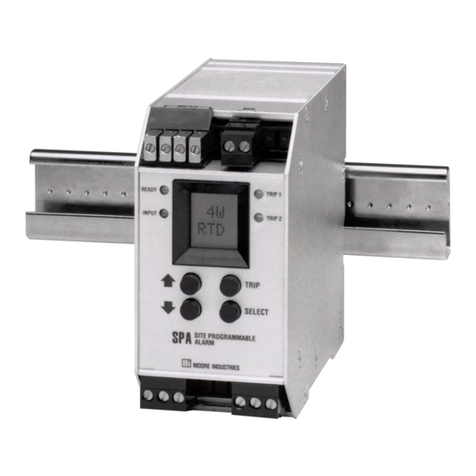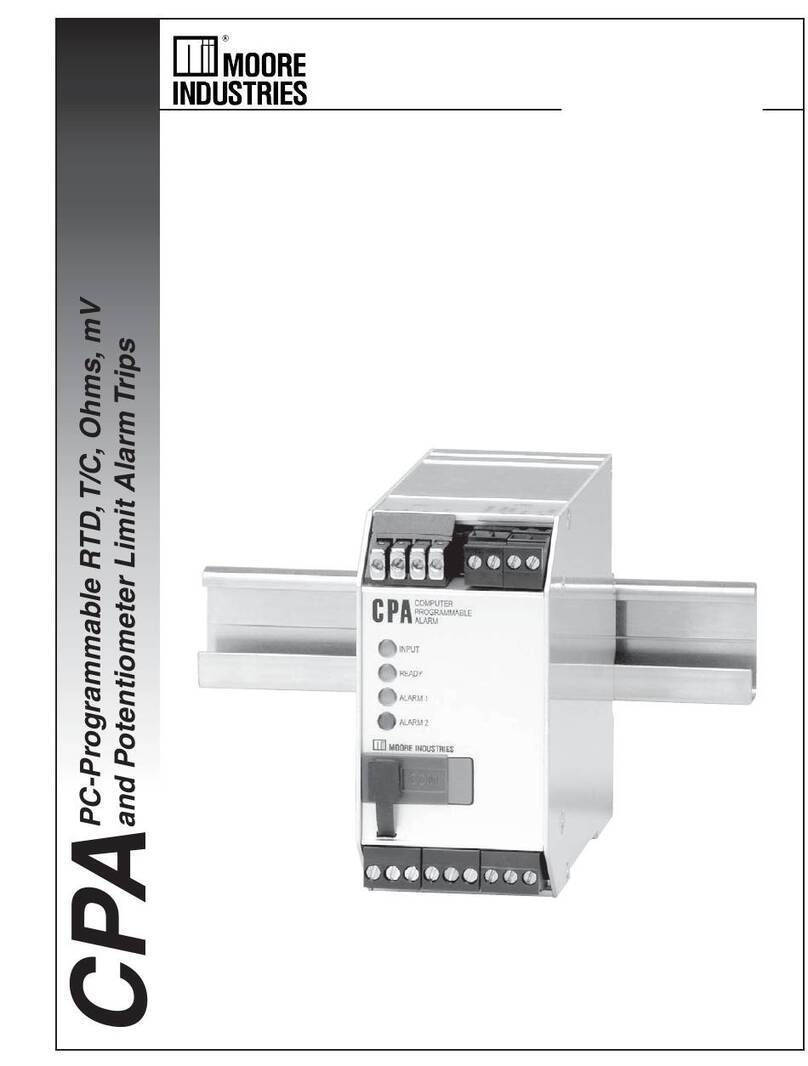
DCA
Page 4
For a complete list of available options, and for
information on other housings, mounting hardware,
and enclosures, contact your Moore Industries Sales
Representative.
AD Option —
Externally-adjustable Dead Band.
Front panel potentiometers vary dead band 1- to 20-
percent of span (nominal), 1- to 50-percent of span
(AD50), or 1- to 100-percent (AD100) of span. (AD
Option not available with some option combinations).
AR Option —
Response Time Delay. Set by the
factory for output delays of 1 to 5, 10, 15, 20, 25, or
30 seconds, according to customer specification.
DA Option —
Deviation Input. Unit signals alarm
condition when the difference between two inputs
exceeds adjustable percent of full span. Requires DI
Option or 2X input. (Not available with some option
combinations.)
DI Option —
Dual Input. Configures dual-alarm DCA
to operate as two, single-alarm units. Standard DI
unit provides a high alarm for one input and a low
alarm for the other. (DI Option not available with
some option combinations).
DPDT Option —
Double Pole, Double Throw/Form 2C
Relays. Contact 5 amps at 28 Vdc, or 117 Vac non-
inductive. (DPDT Option not available with some
option combinations).
FU Option
— Power Fuse. 400 mA rated fuse on
PC-style unit. Use of the FU Option with the STD
housing requires special engineering.
HS Option
— Hermetically Sealed Relays. Rated 1A
@ 117 Vac non-inductive, 2A @ 28 Vdc. Meets
requirements for installation in Class I, Division 2
locations.
MR Option —
Manual Reset. External reset push
button for single- and dual-alarm units. In place of
dead band, MR-equipped units return to normal only
when the process input returns to non-alarm state
and
the external reset push button is pressed.
TT Option —
Lockable Vernier Dial. Front panel,
multiturn potentiometers for setting and locking trip
points. Includes front panel ZERO potentiometer for
appropriate offsets.
TX Option
— Two-wire Transmitter Excitation. Rated
at 30 Vdc @ 25 mA.
7.5A Option —
7.5 amp Relay(s). Rated by CSA and
UL at 7.5 amps, 28 Vdc or 120 Vac.
Model/Serial Number. Moore Industries uses a
system of unit model and serial numbers to keep
track of factory configuration and options for each
DCA shipped and serviced.
The example outlines the significance of each field of
information in a typical DCA model number. Refer to
table 1 for an explanation of the relay configuration
codes used.
If service information or assistance for a DCA is
needed, make a note of the unit’s model and serial
number before contacting Moore Industries’ Customer
Service Department. Our highly skilled technicians
will be happy to assist you.
STD units’ serial and model numbers are located on
an L-shaped metal tag at the top of the connection
terminal strips. On PC DCA’s, the numbers are
located on an adhesive label affixed to the side of the
front panel.
Calibration
Every DCA shipped from the factory is manufactured
and tested according to Moore Industries’ exacting
standards for product quality. A bench check of basic
unit operations is recommended, however, in order to
identify any damage to the unit that may have oc-
curred during shipping. This also allows the user to
effect operational adjustments to trip point settings
and unit dead band, if available.
It is recommended that the procedures in this section
be carried out at a technician’s bench or in a similar
lab environment. This is the safest means of making
adjustments to trip point values; isolated from the
intended DCA application.
The calibration of the DCA consists basically of
setting trip points and dead bands based on the
resistance across the unit contact-closure terminals
as measured by an ohmmeter. With relay contacts
closed, resistance is negligible. With relay contacts
open, resistance is infinite.

